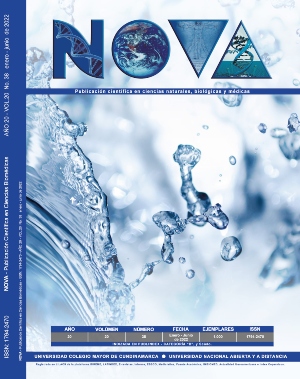Copyright (c) 2022 NOVA Biomedical Sciences Journal

This work is licensed under a Creative Commons Attribution-NonCommercial-NoDerivatives 4.0 International License.
NOVA por http://www.unicolmayor.edu.co/publicaciones/index.php/nova se distribuye bajo una licencia Reconocimiento No Comercial- Compartir igual
Así mismo, los autores mantienen sus derechos de propiedad intelectual sobre los artículos,
Declaración de privacidad.
Los nombres y las direcciones de correo electrónico introducidos en esta revista se usarán exclusivamente para los fines establecidos en ella y no se proporcionarán a terceros o para su uso con otros fines.
Fibroblastic growth factor two (FGF-2), in reducing the senescent effect on mesenchymal stem cell isolated from Wharton´s jelly
Mesenchymal stem cells have been generated interest in tissue engineering, due to their proliferative properties and tissue repair capacity, however, for a successful transplant process, it is necessary to increase the number of cells in a culture expansion process. During this process the proliferative capacity is limited, causing changes in cell morphology and functionality affecting the viability of the culture, this state is known as cell senescence. Oxidative stress and deregulation of growth factors are considered as reasons. Aims. To evaluate the effect of FGF-2 on the senescence of a mesenchymal stem cells culture isolated from Wharton´s jelly and its role in the regulation of oxidative stress. Methodology: 3,5 and 7,5 ng doses of FGF-2 were added to the culture medium from passage 2, then the senescence of the culture was evaluated and the presence of reactive oxygen species was determined during passages 5 and 7. Results. We observed that in passage 5, there is a significant difference 99.5% between the control (+) concerning the FGF-2 treatments, however, in passage 7, an increase in the production of the enzyme β-galactosidase was observed and changes in morphology such as: increase in size and elongated shape of the cell, confirming a senescent state on the culture in all the treatments evaluated. Conclusion. The doses used in this study contributed positively to decrease this process in a cell culture, also, the FGF- 2 can prolong the cultivation time, partially decreasing the concentration of reactive oxygen species.









